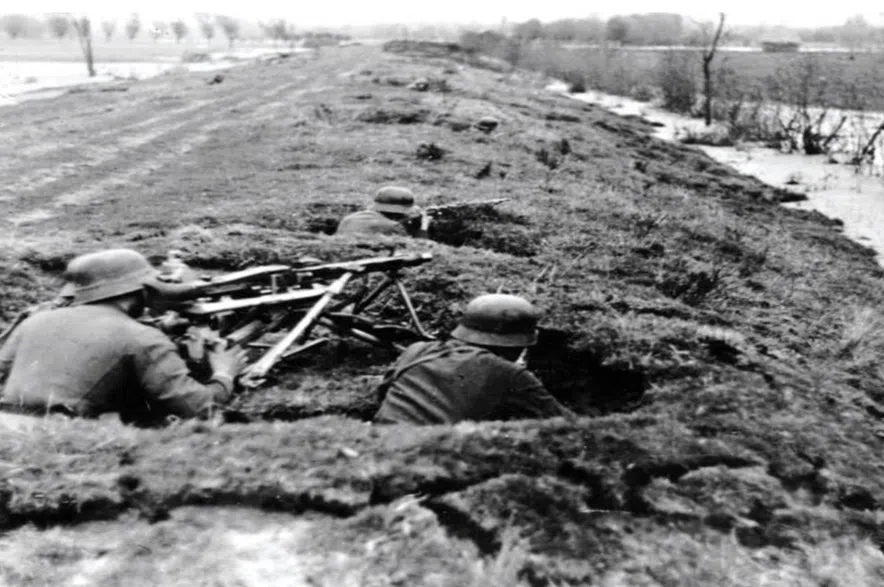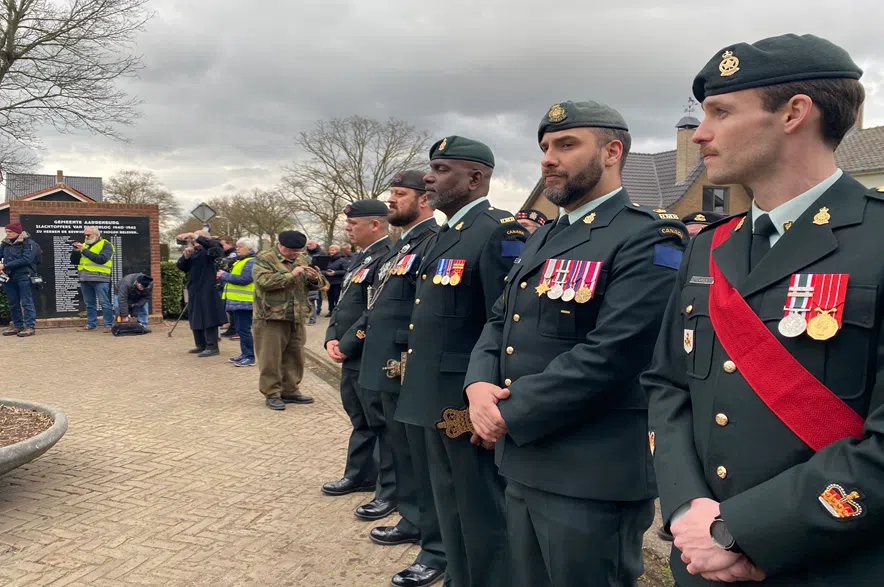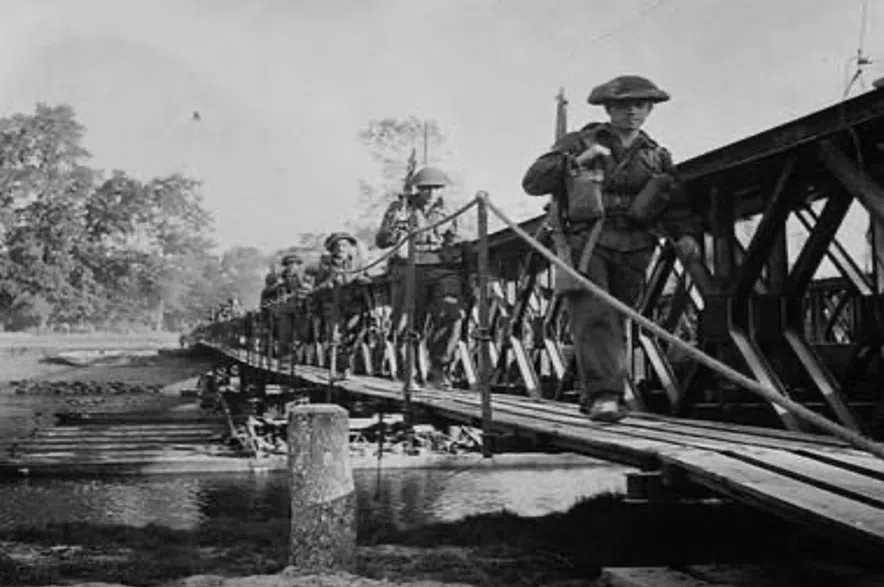The Second World War was the deadliest conflict in human history.
Between both military and civilian casualties, historians estimate that there were anywhere between 70 to 85 million deaths in the war, with civilians making up a large portion of that number.
Read more:
- Letter depicts Sask. airman’s survival in deadly WWII plane crash
- LISTEN: The Remarkable Klara Belkin – A Holocaust survivor in Saskatchewan
- Canadian students in Netherlands for 1945 liberation celebrations
Officially beginning in 1939, it took six years of gruelling conflict, famine and shifting borders in Europe for the war to ultimately end in 1945.
Canada officially declared war on Germany on Sept. 10, 1939 — the first and only time Canada has ever declared war on another country independently.
In 1944, Canada and other nations took part in an operation code-named Overlord. On June 6, 1944, Allied forces fought on and ultimately took control of the beaches of Normandy, France, thus cementing their place in Europe and beginning their invasion.
A portion of that force quickly fought their way north and then east, pushing out of France, through Belgium, into the Netherlands and finally Germany.
While the Allies were still securing their foothold in Europe, the Dutch people were facing gruesome conditions.
After enduring years of Nazi occupation, they were forced to endure a terrible winter, which historians have fittingly named the “Hunger Winter,” which took place from 1944 to 1945.
Faced with exhausted food supplies, a lack of transport and fierce fighting, the Dutch people were forced to hold out for as long as they could in the hopes the Allies would be able to reach them in time.

Kelsey Lonie stands behind a plaque showcasing the different Canadian regiments that took part in the liberation of the Netherlands in World War Two. (Kelsey Lonie, Historian with the Royal Regina Rifles/Submitted)
Kelsey Lonie is a historian with the Royal Regina Rifles, one of the Canadian regiments that helped liberate the Netherlands.
She said the Hunger Winter left a devastating toll on the country.
“Since Germany was still occupying the Netherlands, or pieces of it, they were exporting all of the food available to feed their armies and their civilians back in Germany,” said Lonie.
“Over 20,000 people in the Netherlands died of starvation just in that winter in about three or four months,” she said.
Lonie said the operation to retake the Netherlands was conducted primarily by a Canadian fighting force.
The Netherlands one of the ‘worst’ occupied countries
“It wasn’t quick and it wasn’t easy. It took months — and even once they had liberated the southern part of the Netherlands, which was the Battle of the Scheldt, the northern part of the Netherlands still remained occupied for a very long time,” she said.
“The Netherlands was one of the worst, I would say, of the occupied countries, although it was all horrible.”

German troops stand ready in foxholes along the side of an embankment armed with MG42s. (Kelsey Lonie, Historian with the Royal Regina Rifles/Submitted)
In April 1945, the Canadians along with their Allies made a fierce push to clear German troops from the northeast part of the country, moving house to house and bringing in much-needed supplies for the Dutch people.
The remaining German forces in the country would finally surrender on May 5, 1945, officially liberating all of the Netherlands. Two days later, on May 7, 1945, the rest of German army would surrender. The following day would officially be declared as Victory in Europe Day, also known as VE Day.

Royal Regina Rifles attend a ceremony in the Netherlands marking the 80 year anniversary of Queen Wilhelmina of the Netherlands returning to her country following her exile in the Second World War. (Kelsey Lonie, Historian with the Royal Regina Rifles/Submitted)
Canadians payed a major role in liberation
Lonie recently travelled to the Netherlands for a ceremony honouring 80 years since the return of Queen Wilhelmina of the Netherlands, in which she said Canadians played a major role.
“They were one of the first to push over the border into the Netherlands. They liberated the little village of Eede, which is right on the Dutch-Belgian border. And that liberation made it possible for the queen, who had been ruling in exile, to return to the Netherlands five months later,” said Lonie.
She said that to this day the Dutch people still appreciate the sacrifice Canadian soldiers made to liberate them.
“What was interesting to me is that in Canada, we’ve basically lost almost all of our first-hand accounts and those who remember the Second World War from fighting over there.
“But in the Netherlands, there’s still another generation of people who remember and those are the children who are now in their 80s and 90s and … remember being occupied and how it felt to be liberated.
“Their emotion at seeing Canadians is still so raw and these are stories that are passed down from generation to generation,” said Lonie.
More than 7,600 Canadians died in the effort to free the Netherlands and every May 5, both Canadians and the Dutch pay homage to the liberation.
Read more:











